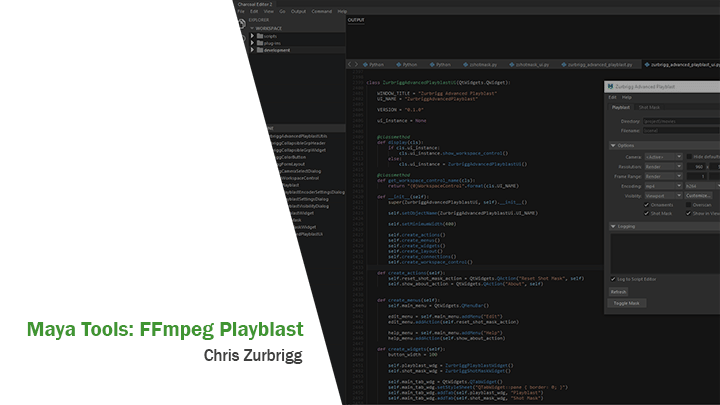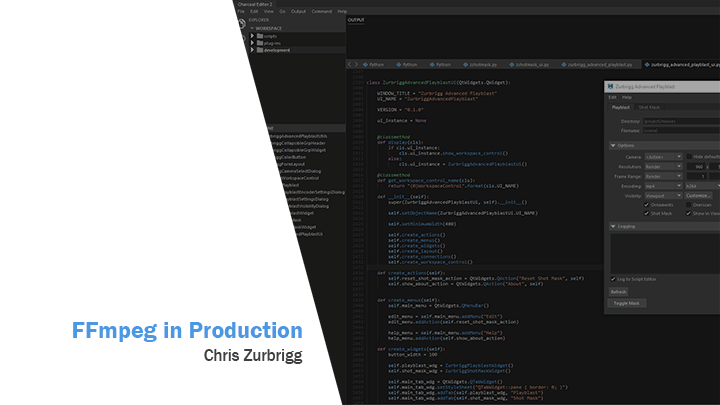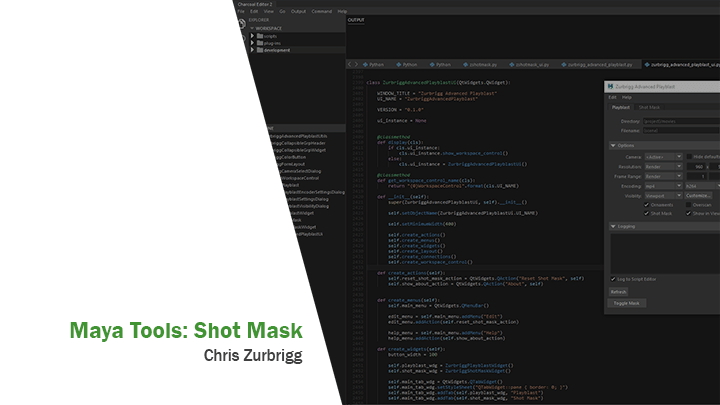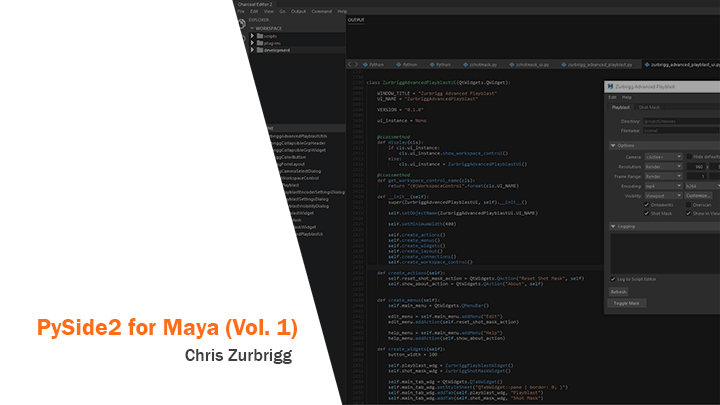
Maya Tools: FFmpeg Playblast
An advanced, project-based course focused on delivering a production-ready playblasting toolset that replaces Maya's outdated media encoder.
This course is available to Total Access patrons.
Course Curriculum
35 Videos (6 hours 51 minutes)
| Getting Started | |
|---|---|
| Free Preview |
| Deliverables | |
|---|---|
| Free Preview | |
| View | |
| View |


